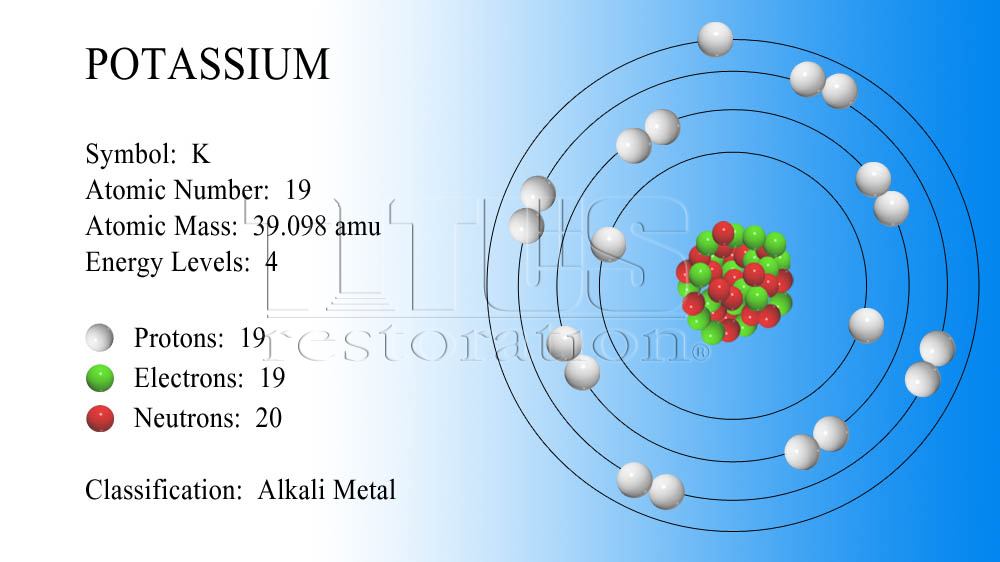Atomic number=19 Since atomic number = number of protons = number of electrons =19 Unipositive ion is obtained by removing an electron. K, or potassium, has a mass number of 19. Fluorine is a non metal element. Mass number of it is 19. No, mass number for potassium is not 19. That is the atomic number. A potassium atom (atomic number 19) and a bromine atom (atomic number 35) can form a chemical bond through a transfer of one electron. The potassium ion that forms has 18 electrons. What best describes the bromide ion that forms? It is a negative ion that has one less valence electron than a neutral bromine atom. This is a list of the 118 chemical elements which have been identified as of 2021. A chemical element, often simply called an element, is a species of atoms which all have the same number of protons in their atomic nuclei (i.e., the same atomic number, or Z).
- 10 Potassium Facts (K Or Atomic Number 19)
- Chemical Elements.com - Potassium (K)
- Atomic Number 19 Periodic Table
In the modern periodic table, the elements are listed in order of increasing atomic number. The atomic number is the number of protons in the nucleus of an atom. The number of protons define the identity of an element (i.e., an element with 6 protons is a carbon atom, no matter how many neutrons may be present). The number of protons determines how many electrons surround the nucleus, and it is the arrangement of these electrons that determines most of the chemical behavior of an element.
In a periodic table arranged in order of increasing atomic number, elements having similar chemical properties naturally line up in the same column (group). For instance, all of the elements in Group 1A are relatively soft metals, react violently with water, and form 1+ charges; all of the elements in Group 8A are unreactive, monatomic gases at room temperature, etc. In other words, there is a periodic repetition of the properties of the chemical elements with increasing mass.
In the original periodic table published by Dimitri Mendeleev in 1869, the elements were arranged according to increasing atomic mass— at that time, the nucleus had not yet been discovered, and there was no understanding at all of the interior structure of the atom, so atomic mass was the only guide to use. Once the structure of the nucleus was understood, it became clear that it was the atomic number that governed the properties of the elements.
10 Potassium Facts (K Or Atomic Number 19)
If an atom has an atomic number of 9 and an atomic mass number of 19, how many protons, neutrons, and electrons does it have?

1 Answer
This isotope of fluorine has 9 protons, 9 electrons and 10 neutrons.
Explanation:
The atomic number is the number of protons
Chemical Elements.com - Potassium (K)
There are:
9 protons
9 electrons
10 neutrons
Fluorine is the element in question, as its atomic number is
The nuclear or isotopic notation would be
Atomic Number 19 Periodic Table
Related questions
